Belgium is an amazing country...small, diverse, full things to see. This article is full of information about parts of Belgium where World War I began. It's a great resource in particular for the history buff for reading or for planning a trip.
Battlefields and Beyond: Exploring the Region Where World War I Began
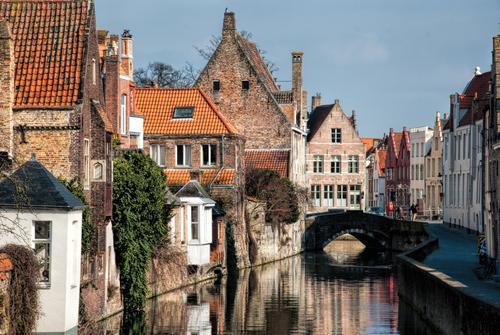
A canal in Brugge (Photo: Steven Olmstead Photography)
The stereotype that Americans are weak on history may have changed in recent years as 9/11 and its aftermath have reinforced just how small a planet we inhabit. And as record numbers of tourists flock to New York’s Ground Zero, it illustrates just how war can echo across generations.
Another war was ignited 100 years ago, though it would be years before it came to be known as World War I. At the time it was the World War, the Great War, even the War to End All Wars. And Ground Zero was the Flanders region of Belgium, where in August 1914 the Battle of Liege kickstarted what would become the largest armed conflict in history to that point. Over little more than 5,000 square miles — inside a tiny country itself the size of Maryland — more than 600,000 men, women, and children died in Flanders between 1914 and 1918.

Belgian soldiers of the 9th Mixed Brigade gather at the Battle of Liege in Belgium. (Photo: The Print Collector/Getty Images)
The rest of the world may have long moved on from World War I, but in parts of Flanders the past century has stood still. The war zone even now is referred to as “The Devastated Land,” where industrial development lagged behind the rest of Belgium clear through the late 20th Century. How devastated? Every year farmers, construction workers, and children at play still dig up artillery shells and occasionally even gas bombs. And as recently as 2011, the remains of three South African soldiers were uncovered near a brick factory.
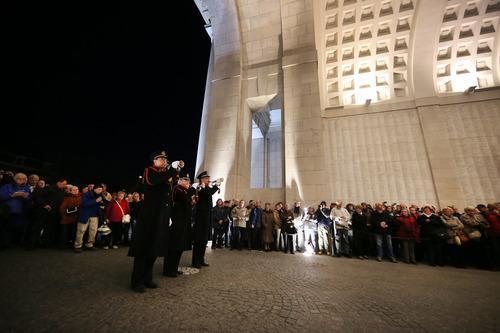
Members of the local fire brigade sound the Last Post at the Menin Gate Memorial to the Missing on March 26, 2014 in Ypres, Belgium. (Photo: Peter Macdiarmid/Getty Images)
An American can feel the years melt away at the nightly Last Post Ceremony at the Menin Gate in Ypres. Or in the rebuilt trenches. Or at any number of the seemingly endless war cemeteries dotting the countryside, which was itself reborn in the last century after ordnance leveled nearly every tree in some towns.
Both of my grandfathers served in the U.S. Army in World War I. Considering that one grandfather died before I was born and the other passed when I was quite young, I’ve never felt close to either. Yet visiting these World War I battlefields somehow forged a new connection for me. For the first time I envisioned them not as elderly patriarchs but instead as the raw and frightened — yet courageous — 20-somethings they undoubtedly were in 1918. The irony wasn’t lost on me that visiting Belgium brought me closer to two young Irish-American soldiers from New York City’s Lower East Side. That’s what travel does.
Here are some of the historic highlights of the Flanders area.
Leuven
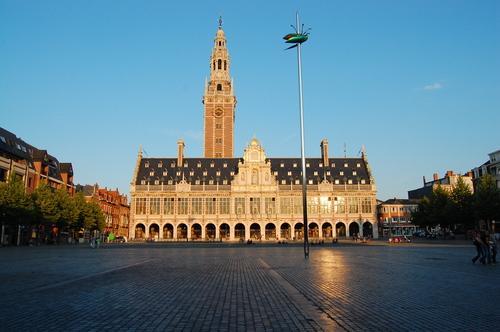
Leuven University Library (Photo: Piotr Kaźmierczak/Flickr)
This small Belgian town quickly became the focus of global attention when World War I began. Shortly after the German army occupied Leuven in August 1914, the University Library Tower was set on fire, an act of total warfare that shocked the world. (It was later set on fire again during World War II.) But an American architect and American donations helped rebuild the facility. “It’s a war memorial — and it’s very, very American,” explains Guido Claesen, a local tour guide. “It’s the most American building in our country.”
The inscribed bricks on the wall reflect the financial support lent by more than 300 U.S. institutions; the donors were comprised of many colleges, high schools, and public school systems, as well as the New York City Police Department. Even the tower’s clock reflects Belgian affection for the United States, with a design featuring 48 stars, one for each of the states in the American flag at the time.
Antwerp

Red Star Line Museum (Photo: Pieter Baert/Flickr)
Soon after the fall of Brussels in the early weeks of World War I, the Belgian capital was moved to Antwerp, where it was thought an “invincible” double ring of forts would provide protection. Within two months, German forces invaded Antwerp and the king, government officials, and much of the Belgian army retreated via a floating pontoon bridge (overall, 20 percent of all Belgians fled the country).
Related: War Tourism — a Growing Trend?
Of particular interest to Americans visiting Antwerp is the Red Star Line Museum, a fascinating dockside exhibit that chronicles the joint American-Belgian ocean passenger line that operated between 1871 and 1935. Exhibits include famous passengers (Albert Einstein immigrated to America via Red Star) and detailed stories of how Belgian-American families migrated to the United States — and how some returned to their homeland to fight in World War I.
Ghent

Castle in Ghent, Belgium (Photo: Erlend Robaye - Erroba/Moment/Getty Images)
Americans may be surprised how much of our history is intertwined with the small Belgian city of Ghent. In addition to the centennial of the start of World War I in 1914, Ghent also is commemorating the bicentennial of the 1814 Treaty of Ghent negotiations that ended the War of 1812. Although Ghent was occupied for all four years of World War I, it served as the German army’s headquarters and therefore sustained little damage.
“Our city was not destroyed,” explains Hilde Proot, a local tour guide. “They were not going to bomb a city they occupied. So our heritage was preserved.” In fact, the story of how some of that heritage was once again preserved during the Second World War was illustrated in the recent George Clooney film, “The Monuments Men.” Note: Be prepared for signage employing both spellings — Ghent and Gent.
Waregem
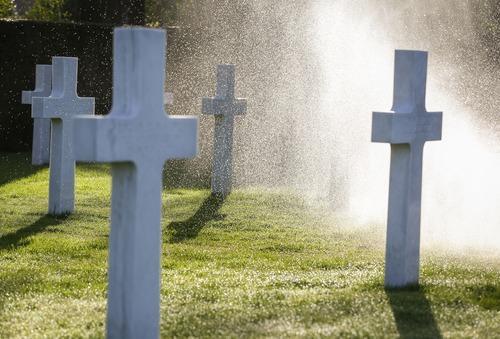
World War I Flanders Field American Cemetery in Waregem (Photo: Julien Warnand/epa/Corbis)
The American Battle Monuments Commission maintains dozens of military cemeteries worldwide, from Gaudalcanal to North Africa to Normandy. And although the Flanders region is filled with military graveyards from many countries, theFlanders Field American Cemetery in Waregem is the only U.S. facility in Belgium. Visitation has “skyrocketed” since President Obama and Belgian King Phillippe visited Waregem in March. Decoration Day (now Memorial Day) has been celebrated at Waregem since 1919; in the past, Belgian children sang “The Star-Spangled Banner” and Charles Lindbergh performed a fly-over, but the site still remains much as it did during World War I. “We want to keep this like a time capsule,” says Christopher Arseneault, the superintendent.
Ypres/Flanders Fields Region
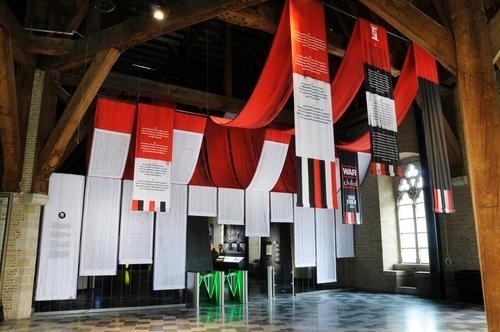
Flanders Field Museum (Photo: VISITFLANDERS/Flickr)
Ultimately, all tourists to Flanders will find themselves in the Ypres Salient battlefields and the small rural towns where some of the bloodiest fighting of World War I took place: Nieuwpoort, Polygon Woods, Passchendaele, Tyne Cot, Vladslo. The Memorial Museum Passchendele 1917 is an exercise in time travel, whereby visitors hunch down and make their way through rebuilt Allied trenches. In addition to dozens of memorials and cemeteries, every itinerary must include the In Flanders Field Museum in Ypres, a breathtakingly modern venue that makes 2014 feel like 1914.

Coquelicots in Flanders Field (Photo: Daniel Jolivet/Flickr)
Nearby is the John McCrae site, which memorializes the Canadian officer who wrote the poem “In Flanders Fields” (“In Flanders fields the poppies blow Between the crosses, row on row”). The short verse spurred the poppy’s emergence into a commemoration symbol for fallen soliders, a tradition that still exists.
World War I generated more than 16 million deaths and produced the first weapons of mass destruction in the form of deadly gases. Eventually, of course, it produced the worst conflagration in history — World War II. For many Americans, it may feel hopelessly distant.
Yet in Flanders, the First World War feels as contemporary as any of our current concerns about global conflict.
William J. McGee writes about travel and is the author of “Attention All Passengers.”
No comments:
Post a Comment